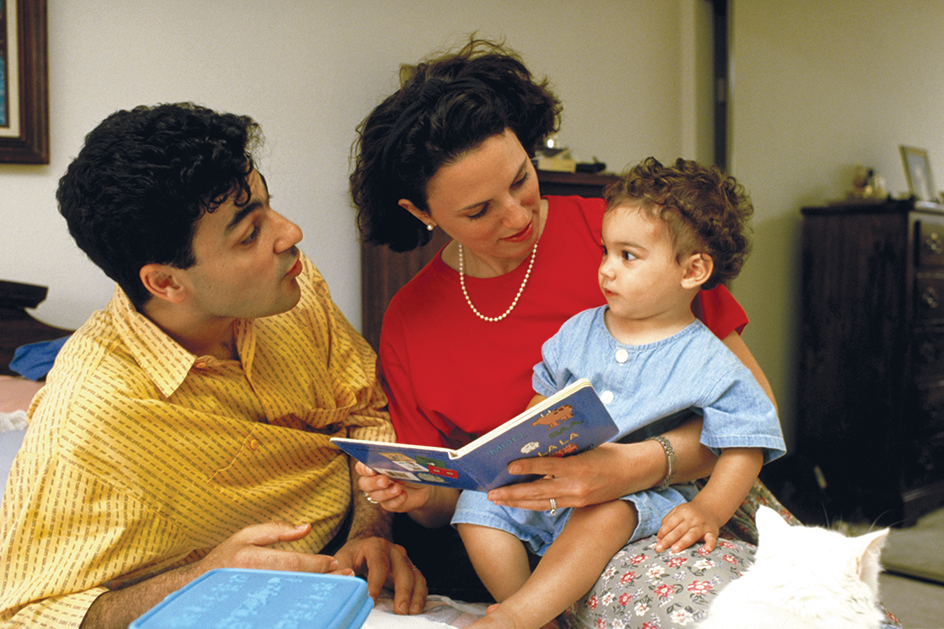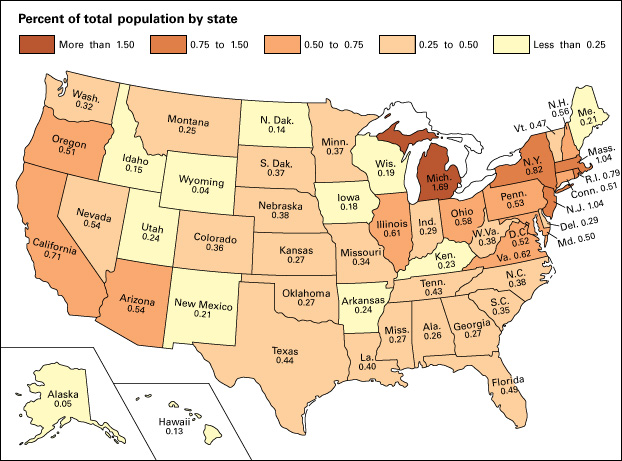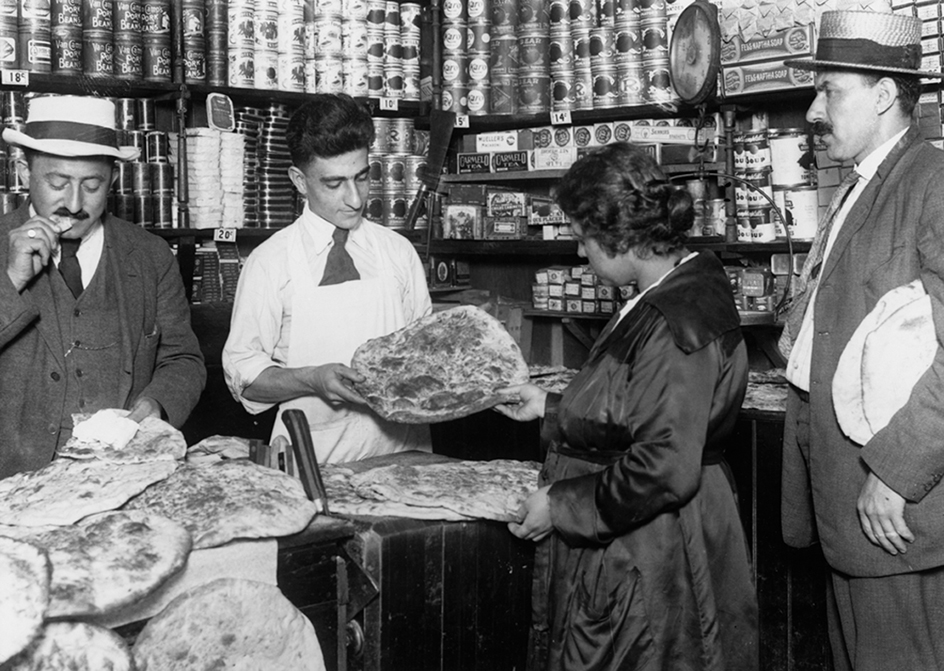Arab Americans are Americans who have roots in the Arab world—that is, the areas where people speak the Arabic language and share other cultural traditions. The Arab world includes much of the Middle East, the region that spreads across southwestern Asia and northern Africa. Countries of the Arab world include Algeria, Bahrain, Egypt, Iraq, Jordan, Kuwait, Lebanon, Libya, Mauritania, Morocco, Oman, Qatar, Saudi Arabia, Sudan, Syria, Tunisia, the United Arab Emirates, and Yemen. The Arab world also includes the historic region of Palestine. Palestine today consists of the state of Israel and two Palestinian territories, the West Bank and the Gaza Strip.

Who Arab Americans are.
According to the U.S. Census Bureau, about 2 million Arab Americans live in the United States. About half of them have roots in either Egypt, Lebanon, or Syria. Large numbers also come from Iraq, Jordan, Morocco, and Palestine.
In the Middle East, more than 95 percent of Arabs are Muslims—that is, followers of the religion of Islam. However, less than half of all Arab Americans practice Islam. Many Arab Americans belong to Eastern Rite Churches, such as the Antiochian Orthodox Church, the Coptic Church, and the Maronite Church. Eastern Rite Churches are independent but related Christian churches with roots in eastern Europe, Africa, and Asia. Other Arab American Christians belong to Roman Catholic and Protestant churches.
Many Arab Americans speak the Arabic language and emphasize the teaching of Arabic to children. Arab American Muslims especially stress the importance of Arabic, since it is the language of the Qur’an, the sacred book of Islam, and the language in which Muslims pray.
Arab Americans typically hold the same values that other Americans hold. They emphasize education, family, faith, and hospitality. In most cases, the lifestyles of Arab Americans are not different from other Americans. Some Arab American immigrants keep certain customs, habits, and traditions from their homelands. For example, an Arab American girl from a Muslim family might cover her hair with a headscarf and still wear jeans and sneakers like other American girls.
Where Arab Americans live.
Arab Americans live in all 50 states. The states with the largest Arab American populations are California, Michigan, and New York.

About 90 percent of Arab Americans live in urban areas. For many years, New York City was the main center for Arab immigrants in the United States. But during the late 1900’s, the Detroit area emerged as the major hub of Arab American life and culture. Numerous Arab American cultural, business, and human service organizations are based in Detroit. Other major centers of Arab American life include Chicago; Los Angeles and other parts of southern California; Washington, D.C.; and parts of northeastern New Jersey.
Arab American accomplishments,
as well as the traditions of the Arab world, have strongly influenced life and culture in the United States. Americans of Arab descent have made significant contributions to virtually every field and profession.
Michael E. DeBakey, a surgeon of Lebanese descent, won fame for his groundbreaking work with the heart and blood vessels. He also worked on the development of an artificial heart. Arab American scientists Elias J. Corey and Ahmed H. Zewail won the Nobel Prize in chemistry in 1990 and 1999, respectively. Steve Jobs, the son of a Syrian immigrant father, cofounded the computer company Apple Inc. in 1976.
George A. Kasem was the first Arab American to serve in the U.S. Congress. Kasem, who represented California in the House of Representatives, was elected in 1958. James Abourezk, the son of Lebanese immigrants, represented South Dakota in the U.S. Senate from 1973 to 1979. Donna E. Shalala was the first Arab American to serve in a U.S. president’s Cabinet. She served as secretary of health and human services from 1993 to 2001. Ralph Nader, the son of Lebanese immigrants, became well known as a consumer advocate and presidential candidate.
Well-known Arab American entertainers have included the comedian and philanthropist Danny Thomas; the Emmy-winning actor Tony Shalhoub; and “American Top 40” disk jockey Casey Kasem. Notable Arab American athletes have included football players John Elway and Doug Flutie and racecar driver Bobby Rahal, as well as the Moroccan-born marathon runner Khalid Khannouchi.
Traditional aspects of Arab culture have become part of the daily life of many Americans. For instance, “pita” bread and chickpea dishes—such as hummus and felafel—are familiar foods for many people in the United States. In addition, some people use couscous (steamed cracked wheat) instead of rice in many dishes. Couscous originated in northern Africa.
Henna (a reddish dye) and kohl (powder worn around the eyes) are common cosmetic products that have roots in the Arab world. Raqs sharqi—commonly known as belly dancing—is a Middle Eastern dance style that many people in the United States use as a form of exercise or entertainment. Many Americans also listen to Arab popular music or to regional styles, such as rai << ry >> music. Rai music originated in Algeria and combines Arabic love poetry and Bedouin folk music. Modern rai has also been influenced by such genres as rock, flamenco, soul, and reggae.
History of Arab immigration.
Arab immigrants began settling in the United States in the 1880’s. The first immigrants were mainly Christian Arabs from the lands that are now Lebanon and Syria, then part of the Ottoman Empire. They came to the United States in search of economic opportunity and freedom from famine and other harsh conditions. Most early Arab immigrants settled in commercial and industrial areas. By 1925, an estimated 200,000 Arabs were living in the United States.
During the late 1800’s and early 1900’s, many Arab immigrants faced challenges to their eligibility for U.S. citizenship. Many of these challenges involved special restrictions the U.S. government had placed on Asian immigration. Some judges denied Arab immigrants—most of whom came from southwestern Asia—the same rights granted to ”white” immigrants at the time. Eventually, after many years of dispute, the Arab immigrants’ eligibility for citizenship was confirmed.

Arab immigrants faced additional obstacles in the early 1900’s, when quotas (limits) were placed on immigration from countries outside of northern Europe. Under the National Origins Act of 1924, the United States admitted only a few hundred Arab immigrants annually.
During the mid-1900’s, a cultural transformation took place among many Arab Americans. They continued to organize around their Arab heritage—such as establishing Arab cultural organizations, charity groups, Eastern Rite Churches, and mosques—but they increasingly identified themselves as Americans. In the years surrounding World War II (1939-1945), Arab Americans were strongly patriotic, served in the military, and were proud of their U.S. citizenship. Most Arab American families focused heavily on education and economic advancement.
A new wave of Arab immigrants came to the United States after the government lifted nationality-based immigration quotas in the 1960’s. Many immigrants came to avoid instability and violence associated with conflicts in newly independent Arab states. The Arab-Israeli wars of 1948 and 1967, for instance, displaced hundreds of thousands of Palestinians.
This second wave of immigrants came primarily from Egypt, Iraq, Jordan, Lebanon, Syria, and Palestine. The first wave of immigrants had been mainly Christians, but the new wave included large numbers of Muslims. Many of these Muslims faced unique challenges in balancing their religious lives with American culture. Many Americans knew little about—and sometimes were hostile to—Muslim beliefs and traditions.
The second wave of immigrants placed a heavy emphasis on ethnic identity and on the continuation of Arab traditions. Since the 1960’s, numerous Arab American organizations have sought to assist Arab immigrants, foster ties with the Arab world, and promote use of the Arabic language. Some organizations specifically address the needs of Arab Americans of a particular religious sect or country of origin.
By the 1990’s, more than 10,000 Arab immigrants arrived in the United States each year. In the late 1990’s and early 2000’s, however, changes in immigration law made it more difficult for Arabs to come to the United States.
Arab Americans today.
The Arab American community has been directly affected by political instability in the Middle East; the terrorist attacks of Sept. 11, 2001; and hostilities between the United States and parts of the Arab world. Because the terrorists responsible for the September 11 attacks were Arab Muslims, some Americans began to treat Arab Americans with suspicion and hostility. Many innocent Arab Americans faced discrimination, harassment, threats, and violence in the months and years following the attacks. Many people argued that certain government actions unfairly targeted Arabs and Muslims in the United States. The Iraq War (2003-2011) caused further difficulties for Arab Americans, especially those of Iraqi descent. The U.S. government and numerous Arab American organizations have worked to address these concerns and to eliminate discrimination.
Since 2001, the Arab American community has actively sought to promote cultural understanding between Arab Americans and their fellow citizens. In addition, many Arab Americans have assisted the U.S. government by providing expertise on Arab culture and politics, and by working to build friendly relations between the United States and the Arab world.
See also Arabic language; Arabic literature; Arabs; Muslims.
